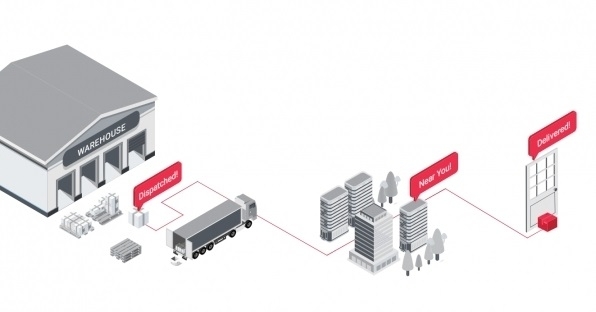Combating RTOs: the bane of e-commerce existence

Returns management is an important element and growing concern in the Indian e-commerce segment. Juie Talavia, senior business development manager, ClickPost writes about contextual dynamics of return to origin in India, reasons for higher RTOs, challenges it poses for logistics, last-mile as well as e-commerce companies. She is also proposing several solutions to these challenges by bringing down the RTO percentage.
RTO stands for return to origin, and while that may sound like something we want for our Disney films, it is highly detrimental to e-commerce growth. When delivery of an order is unable to be completed, especially after multiple attempts, the order is marked as an RTO. This effectively cancels the order, triggering a refund of the price of the purchase to the customer, while your business continues to bear the burden of the shipping costs. The order must then begin its arduous odyssey-level journey back to the origin warehouse.
RTOs essentially act as a major blockage to maximum order fulfilment for any e-commerce business in India. The higher your RTO percent, the more blockage your business is facing. Eventually, all that blockage will lead to some major internal pain, which in business terms means major monetary and resource-based losses.
Why are RTOs such a big problem for e-commerce enterprises in India?
The challenges faced by the e-commerce industry at large can differ from country to country. In more rigid and e-commerce-reliant nations like the US, the biggest difficulties are faced with respect to customer loyalty and cyber security. Since most orders are prepaid, packages are usually left on customer doorsteps and not handed directly over to customers. This keeps RTO numbers low, making up only 1-2 percent of all orders. E-commerce businesses in India, on the other hand, usually end up dealing with an average of 10-20 percent of orders ending in RTO. There are three major reasons for this.
Firstly, India as a whole is heavily reliant on COD. Most online shoppers are weary of e-commerce businesses and prefer to make payments only after they’ve received the order. This, unfortunately, gives them easy opportunities to reject an order on delivery or refuse to make payment, resulting in RTOs. While offering only prepaid options may seem beneficial, it would result in your business losing a huge chunk of its customer base, and quite possibly losing the trust of numerous potential customers.
Another reason why the ecommerce industry in India faces such rampant RTO issues is because a large portion of every company’s customer base is made up of first-time shoppers. This basically means you are dealing with a lot of uncertainty in terms of purchasing confidence. Shoppers that are just starting to get used to the e-commerce way of life will change their minds about their orders frequently and triple question every purchase they make. First time shoppers from rural areas will be wary and suspicious about the quality of items provided by this convenient method of shopping online. This additionally fuels the overall customer preference toward COD.
The third leading cause behind RTOs is a real doozy but it also happens to be the most solvable of the three. E-commerce shipping operations in India are plagued by last-mile delivery exceptions. These exceptions largely include delayed deliveries, stuck shipments and failed deliveries, many of which end in cancellation and consequential RTOs. Failed deliveries, notified in the form of NDRs (Non-Delivery Reports), are perhaps the most destructive among these delivery exceptions. NDRs, when not properly managed, have an extremely high probability of turning into RTOs. They can occur for a variety of reasons. The most common ones are:
Incorrect customer address/phone number
There are numerous occasions in which customers may accidentally submit an incorrect or incomplete address or contact number. Accordingly, the delivery agent would be unable to find the location to complete the delivery.
Customer refused delivery
Customers take their free will very seriously when it comes to making purchases, especially online purchases. They may change their mind about the order by the time the delivery is made, for any number of reasons like if the delivery was delayed or simply because they no longer want the item. This occurrence is especially high in the case of COD orders where there is no compulsion to accept the order as no money has changed hands.
Customer was unavailable/unreachable
location but the customer may not be available to receive the order. Similarly, if the delivery agent cannot contact the customer to ascertain their availability or alternate dropoff method, the delivery will go uncompleted.
Customer rescheduled delivery
On some occasions, customers may be considerate enough to inform a delivery agent about their unavailability at the time when they’re notified that the order is OTW (On the Way). They may accordingly give the delivery agent an alternate delivery date and time, which the agent can update you about accordingly.
Customer was unable to pay
Another frequent outcome of COD orders that results in RTOs is when a customer is unable to make the payment for the order at the time of delivery. This could happen because the customer is unprepared and does not have the money ready or because they just don’t want to fork over the cash.
Fake delivery attempt
Sometimes, a delivery agent may choose to mark an order as an NDR without making any delivery attempt. These types of failed deliveries are termed as fake deliveries and are extremely detrimental to a good customer experience.
How technology can help reduce last-mile delivery exceptions?
Given the 3 main reasons for high RTO percentages in India’s e-commerce sector, options for addressing this particular frustration are limited. Removing the option for COD payment would result in numerous people veering away from online shopping. And there’s no orientation process that will suddenly make first-time shoppers magically less apprehensive about their purchases. This makes NDR management the most viable move as well as the most effective, since the largest percentage of RTOs can be attributed to failed deliveries.
There are some basic methods of managing NDRs but they are minimally effective. To really make a dent in those RTO numbers, you need a strategic approach that uses a strict protocol and makes use of the right resources. At the top of this list of resources is an NDR management software, like the one offered by ClickPost. The ideal NDR management system would make use of AIs for tracking NDRs and API integrations for smoother communication between all involved parties. The best NDR management protocol is one that enables you to be proactive with minimal effort and empowers customers to participate in the successful delivery of their order. With the help of a technology-supported NDR management workflow, you can drastically reduce NDRs and show customers that you are the highest level of committed to fulfilling their orders. These are some of the immediate advantages you will see once you employ an intelligent NDR management system.
Faster NDR updates
Traditional methods for NDR management rely solely on carriers to provide NDR updates, which they typically do in bulk at the end of each working day. This means an entire day is lost before responding. An NDR management system uses API integrations to ensure you receive NDR updates in real-time as soon as they occur, thereby speeding up your response time.
AI-enabled NDR segregation
There was a very specific reason for us to enumerate the different causes behind failed deliveries. These causes are the best way to identify and categorise NDRs to determine the best ways to address them. An NDR management system should provide you with an AI-enabled mechanism configured to track NDRs based on the reason for the delivery failure.
Automate communications to customers
Once you’ve separated and grouped different NDRs in accordance with their causes (incorrect address, customer unavailability, etc.), the next step is to address these issues with customers. With an NDR management software in play, issue-specific queries are automatically sent to customers. These queries will directly address the cause of the failed delivery. For example, in case of an NDR caused by a problem with the address, a query will be sent asking for the correct address and/or the nearest identifiable landmark.
Send information to carriers quickly
The end goal of an NDR management protocol is to enable failed deliveries to be completed successfully with the help of the right information. So as soon as a customer provides said information via an issue specific query, that data will be automatically pushed to carriers and then to their delivery agent. This means the next delivery attempt made will be an informed one and therefore more likely to be successful.
Follow up with customers
There are still possibilities that the next delivery attempt fails. Again, the reason for the delivery failure should be noted so immediate action can be taken. When another failed delivery attempt occurs, an automatic follow-up response will be sent to customers to once again ascertain the best way to complete the delivery. This fortifies the customer’s faith in you as you are actively working to ensure successful delivery, regardless of multiple initial hiccups.
Identify and reduce fake deliveries
As you can see, most functions of an NDR management system are focused on completing deliveries. An intelligent NDR management mechanism, like the one provided by ClickPost, provides additional analytics related support in the form of fake delivery detection. By identifying cases of fake deliveries on a real-time basis, you can implement strategic actions to weed out these falsified delivery attempts overall.
Conclusion
A high RTO percentage is a challenge that is somewhat unique to ecommerce ventures in India. Unique challenges require unique solutions in the form of data-driven management protocols. A NDR management system beautifully intertwines technology and knowledge of logistics to create a streamlined workflow. This workflow targets NDRs in accordance with their cause, prioritising these failed deliveries based on their likelihood of being solved. The logic behind this system is simple. First things first, deal with the problems that have ready-to-go solutions. Simultaneously, collect data that helps you understand the more complex issues. And finally, automate all processes that can be predicted. At its core, an NDR management system allows your business to seamlessly interact with customers and improve their post-purchase experience. This frees up your hands to focus on more pressing matters, like overall growth and pre-purchase customer experience.
 | Juie Talavia is the senior business development manager at the integrated logistics platfrom ClickPost |
The views and opinions expressed in this article are those of the author and do not necessarily reflect the views of Indian Transport & Logistics News



